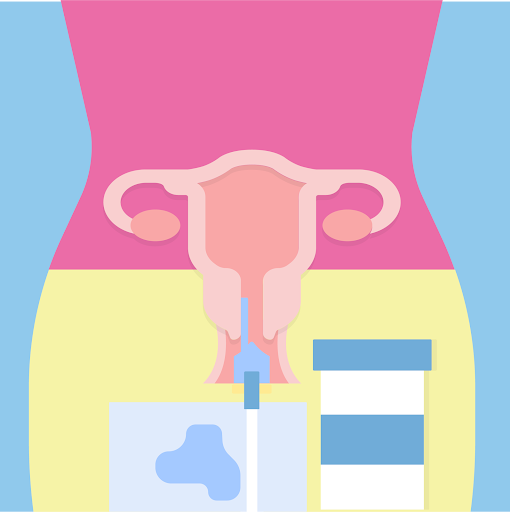Breast Pain and Breast Cancer Detection: Key Information You Should Know
Many women have anxiety when they experience breast pain, particularly when they are afraid they may get breast cancer. It's important to realize that not every breast pain is associated with cancer, though. This blog aims to shed light on the different aspects of breast pain and breast cancer detection, providing you with valuable information to help navigate this sensitive topic.
Understanding Breast Pain
Mastalgia, another name for breast discomfort, is a common illness that affects women of all ages. It can be categorized into two main types: cyclic and non-cyclic.
Cyclic Breast Pain
Cyclic breast pain is closely linked to the menstrual cycle and is the most common type of breast pain. It usually occurs in the days leading up to menstruation and subsides once the period begins. This type of pain is typically described as a dull, heavy, or aching sensation. It can affect one or both breasts and may radiate to the armpit area.
Causes of Cyclic Breast Pain:
- Hormonal fluctuations during the menstrual cycle
- Fibrocystic breast changes (non-cancerous lumps or cysts)
- Stress and lifestyle factors
Non-Cyclic Breast Pain
Non-cyclic breast pain can happen at any moment and is not connected to the menstrual cycle. This type of pain is often described as sharp, burning, or stabbing and can be localized to a specific area of the breast.
Causes of Non-Cyclic Breast Pain:
- Injury or trauma to the breast
- Infections (such as mastitis)
- Certain medications
When to Worry About Breast Pain
While breast pain is usually benign, it's essential to be aware of certain warning signs that may warrant further investigation. If you experience any of the following symptoms, it's a good idea to consult a healthcare professional:
- Persistent, unexplained breast pain that doesn't go away
- A new lump or thickening in the breast or underarm area
- Changes in the size, shape, or appearance of the breast
- Nipple discharge, especially if it's bloody or clear and occurs without squeezing
- Skin changes on the breast, such as dimpling, puckering, or redness
- Nipple changes, such as inversion or scaling
Breast Cancer Detection
The likelihood that breast cancer will respond well to treatment is greatly increased by early identification. There are several methods used to detect breast cancer, each with its own benefits and limitations.
Self-Examination
Regular breast self-examinations can help you become familiar with the normal look and feel of your breasts, making it easier to notice any changes. Here's a simple way to perform a self-exam:
- Look at Your Breasts: Stand in front of a mirror with your shoulders straight and arms on your hips. Look for any changes in size, shape, or appearance, as well as any visible lumps or skin changes.
- Feel Your Breasts While Lying Down: Lie down and use the pads of your fingers to check the entire breast and armpit area. To feel the entire breast, from the outside to the inside, apply varying pressures.
- Feel Your Breasts While Standing or Sitting: Many women find it easiest to feel their breasts while their skin is wet and slippery, so they may prefer to do this step in the shower. Cover the entire breast, using the same hand movements described in step 2.
Clinical Breast Examination
A clinical breast examination is performed by a healthcare professional and involves a physical examination of the breasts and underarm areas. This exam can help detect lumps or other changes that may not be noticeable during self-examinations.
Mammography
Mammography is an X-ray imaging technique that is widely used for breast cancer screening.It can find abnormalities that can point to the existence of cancer as well as tumors that are too tiny to feel.
Types of Mammograms:
- Screening Mammograms: Used for women who have no symptoms of breast cancer. These are typically recommended annually for women aged 40 and older.
- Diagnostic Mammograms: Used to investigate specific breast changes or symptoms, such as a lump or nipple discharge, and to further examine abnormalities detected during a screening mammogram.
Ultrasound
Sound waves are used in breast ultrasonography to produce images of the breast tissue. It's often used in conjunction with mammography to further evaluate abnormalities, particularly in women with dense breast tissue.
MRI
Breast magnetic resonance imaging (MRI) is a more sensitive imaging technique that is used in specific situations, such as for women at high risk of breast cancer or to better assess the extent of cancer after a diagnosis.
In Nutshell
Breast pain is a common experience for many women and is usually not a cause for alarm. However, being vigilant about breast health and understanding the warning signs of breast cancer are crucial for early detection and treatment. Regular self-examinations, clinical exams, and appropriate screening methods like mammography play vital roles in monitoring breast health.
If you're experiencing persistent breast pain or notice any concerning changes, don't hesitate to seek medical advice. Remember, early detection can make a significant difference in the successful treatment of breast cancer. Make your breast health a priority, remain educated, and take preventive measures!
Leave a Message
This site is protected by reCAPTCHA and the Google Privacy Policy & Terms of Service apply.





